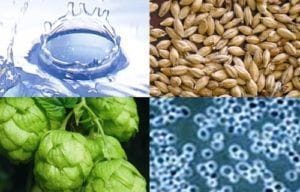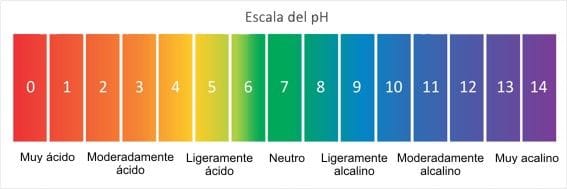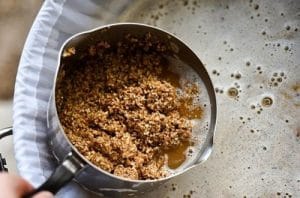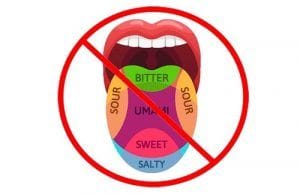This post is also available in:
Español
Português
Astringency is a phenomenon that, although often underestimated, is critical in defining the quality of a beer, as its presence can drastically alter the balance and perception of other flavors and textures.

We are referring to a sensation of dryness and roughness on the tongue, palate, and gums, which originates from the interaction of certain compounds that reduce the lubricating capacity of saliva.
Contenido
What is Astringency?
From a specific perspective, astringency is not a taste but a tactile sensation in the mouth resulting from the chemical interaction of tannins and other polyphenols with salivary proteins.
It is typically perceived as a persistent roughness in the mouth that can modify the perception of other flavor characteristics, such as sweetness or bitterness.
Its presence in beer is influenced by multiple factors, including the ingredients used, the pH of the process, temperature and mashing time, grain sparging, fermentation, and storage.
Astringency is particularly relevant in beer styles where smoothness and balance are key, such as pilsners.
However, in more robust styles, such as stouts or barleywines, a slight astringency may be acceptable, as it can add complexity and contrast.
What Causes Astringency in Beer?
Tannins are the primary contributors to astringency, and these are mainly found in grain husks and hops, with solubility increasing at higher temperatures, alkaline pH, or prolonged mashing times.
In addition to tannins—a specific type of high-molecular-weight polyphenols—other polyphenols such as flavonoids, phenolic acids, and proanthocyanidins can contribute to astringency in beer, especially when oxidized during brewing or storage.

The water used in brewing also plays a fundamental role. A water profile with high carbonate content can favor the extraction of tannins and other phenolic compounds, intensifying the perception of astringency.
The composition of mineral salts in the water affects how these compounds interact with the chemical structure of the beer and with salivary proteins.
Hops, although less significant than grains in terms of astringency, can contribute some roughness when varieties with high polyphenol content (Cascade, Centennial, Chinook, etc.) are used or when dry hopping is overdone.
Prolonged contact with the wort or finished beer can favor the extraction of these compounds, especially if cold maturation is not properly managed.
Formation of Astringency
Mashing is one of the most critical stages in the formation of astringency.
A pH above 5.8 facilitates the solubilization of tannins from grain husks, while temperatures above 76°C increase the extraction of phenolic compounds.

Milling also significantly influences astringency; overly fine milling breaks the husks into excessively small particles, exposing more surface area to extraction and promoting the release of unwanted polyphenols.
During grain sparging, known as lautering, excessive water or an inappropriate pH can carry additional tannins into the wort.
If the gravity of the collected wort falls below 1.010, the extraction of astringent compounds is likely to increase.
Adjusting the pH of the sparging water within the optimal range of 5.2 to 5.6 and controlling the amount of water used helps mitigate this issue.
Fermentation and Storage
During fermentation, although yeast does not directly produce astringent compounds, certain defects can enhance the sensation of astringency.
The presence of volatile phenols, especially in beers infected with wild yeast or bacteria, can intensify dryness and roughness on the palate.
Additionally, incomplete fermentation or the use of unhealthy yeast can generate byproducts that alter the perception of the beer’s texture.
Aging and storage also play an important role. The oxidation of polyphenols during this stage can generate more astringent compounds and modify the sensory perception of the beer.
Exposure to oxygen favors the formation of quinones, which interact with proteins and contribute to the sensation of roughness in the mouth.
Inadequate storage, with temperature fluctuations or excessive contact with oxygen, can exacerbate this effect.
Effects on the Sensory Experience
Astringency impacts the sensory experience by altering the texture and balance of the beer.
On the palate, it is perceived as a persistent dryness that can overshadow other attributes, such as maltiness or sweetness.
In styles where a smooth and rounded profile is sought, such as lagers or wheat beers, astringency is generally undesirable.

However, in high-alcohol beers or those with a heavy load of dark malts, slight astringency can even contribute to sensory complexity.
In stouts, barleywines, and certain Belgian beers, a moderate level of astringency can balance the perception of sweetness and provide a structural sensation that enriches the overall profile of the beer.
The perception of sweetness may be reduced by the presence of high astringency, which in some cases can make a well-balanced beer seem drier than expected.
Similarly, hop bitterness can be amplified when there is an excessive load of astringent polyphenols, creating an unpleasant sensation of roughness.
Controlling and Minimizing Astringency
Ingredient selection is the first step to avoid unwanted astringency.
Choosing quality malts, with good control over the malting process, reduces the presence of unwanted phenolic compounds.
During mashing, controlling the pH within the appropriate range and avoiding excessive temperatures limits the extraction of tannins.
Balanced milling, which preserves the integrity of the husks without generating an excess of fine particles, also helps keep astringency under control.

In grain sparging, avoiding over-extraction is essential. Stopping the sparge before reaching too low a gravity and adjusting the water chemistry to reduce the carryover of polyphenols minimizes the risk of astringency.
During fermentation, using healthy yeast and maintaining optimal conditions reduces the likelihood of defects that could intensify the sensation of dryness in the mouth.
Proper storage, with precise oxygen management and controlled temperature conditions, prevents the oxidation of polyphenols and the formation of additional astringent compounds.
Using barrels or bottles with low oxygen permeability and minimizing air contact during transfer and packaging are key strategies to preserve the desired sensory profile.
How to Identify and Evaluate Astringency
To identify astringency in beer, it is important to pay attention to the mouthfeel and the persistence of dryness.
Unlike bitterness, which is perceived on the taste buds, astringency is felt as a generalized roughness in the mouth and tongue.

In certain styles, it can add depth and complexity, while in others it may be a sign of brewing issues.
Understanding its origin and how it influences the overall perception of beer allows for a deeper appreciation and more informed judgment when evaluating a beer.
Final Thoughts
Astringency is a complex phenomenon that can significantly influence the quality and perception of a beer.
Its control is not only a technical challenge but also an opportunity to adjust the sensory profile of a beer and enhance its characteristics.
References
- Bamforth, C. W. (2006). Scientific Principles of Malting and Brewing. American Society of Brewing Chemists.
- Briggs, D. E., Boulton, C. A., Brookes, P. A., & Stevens, R. (2004). Brewing: Science and Practice. Woodhead Publishing.
- Mallett, John (2014). Malt: A Practical Guide from Field to Brewhouse. Brewers Publications.
- Hieronymus, S. (2012). For the Love of Hops: The Practical Guide to Aroma, Bitterness, and the Culture of Hops. Brewers Publications.
We recommend
- Vertical Tasting vs. Horizontal Tasting: What Are They? What Are Their Objectives and Differences?
- What is a Cold Chain and Why is it Important for Maintaining Beer Quality?







